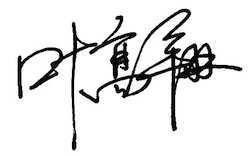|
||||||||||
|
FEATURESEducating Through Aesthetics 《美育学刊》 A Publication Announcement
The interweaving of literary composition and artistic practice with socio-moral transformation was a feature of pre-modern Chinese cultural practices, be they elite or demotic. The melding of the personally expressive with the politically and morally inflected aspects of life continued far beyond the end of formal dynastic rule. Zhejiang First Normal College (Zhejiangsheng diyi shifan xuexiao 浙江省立第一師範學校), established in Hangzhou in 1908, would train generations of students to play a role in modern Chinese culture, be it revolutionary, reformist or more importantly humanist. The school was under the direction of the noted educational reformer Jing Hengyi (經亨頤, 1877-1939). Through an educational ethos that espoused nurturing the spirit while inculcating a sense of moral rectitude the aim of Jing and his colleagues was to strengthen the 'hearts and bodies' of the students the school and train 'new citizens' (xinmin 新民), an idealized type of person expected to play a role in transforming and modernizing China. The following publication announcement for the academic journal Mei Yu which was launched in late 2010 by Ye Gaoxiang 葉高翔, president of Hangzhou Normal University, notes, that a cohort of Zhejiang First Normal College graduates went on to establish the first Mei Yu in Shanghai in 1920. The revived Mei Yu (called Meiyu Xuekan 美育學刊) operates in the prescribed environment of the People's Republic. Today, efforts to support a broad, post-revolutionary aesthetic education can hardly escape the requirements of the party-state, which even compared to the era of 'partification' (danghua 黨化) of the Nationalist Republic remain stifling. These paternalistic strictures are aimed at imposing in students a form of 'correct' thinking, as well as appropriate cultural attitudes and a constricted political consciousness. Nonetheless, the editors of the new Mei Yu, as well as many of its contributors, identify also with the positive heritage of its Republican ancestor, part of an intellectual lineage that draws inspiration from thinkers such as Wang Guowei, Liang Qichao and Cai Yuanpei (王國維、梁啓超、蔡元培).  Fig.1 The Master Hongyi and Feng Zikai Research Institute (Hongyi Dashi, Feng Zikai Yanjiu Zhongxin 弘一大師、豐子愷研究中心), Hangzhou Normal University (Hangzhou Shifan Daxue 杭州师范大学). (Photograph: Lois Conner)
The writer and editor Chen Xing 陳星 who with his colleagues established the new Mei Yu was also founder in 1997 of the Master Hongyi and Feng Zikai Research Institute (Hongyi Dashi, Feng Zikai Yanjiu Zhongxin 弘一大師、豐子愷研究中心.[Fig.1] The institute is located on the grounds of Hangzhou Normal University. It encourages and supports academic and popular work related to two of the most important cultural figures active in and around West Lake in the twentieth century. Li Shutong (李叔同, 1880-1942, later the monk Hongyi 弘一) was one of Feng Zikai's (豐子愷, 1898-1975) teachers at Zhejiang First Normal College in the 1910s, and a man who had the most profound influence on the aspiring artist. As Wen-hsin Yeh has noted, the principal of the school, Jing Hengyi, was anxious that the students in his progressive educational enterprise avoid the lyrical lure of West Lake. He 'advised his students to stay away from the natural poetry and religious aura of the lake, lest they be tempted to give up their social mission.'[1] In the case of Feng Zikai, Jing's anxieties were well founded. Feng went on to become a cultural figure (artist, essayist, translator and educator) whose achievement quietly challenged China's modern politicized culture.[2] In late 2011, Chen Xing published a major new study of Feng Zikai's life and work.[3]—The Editor 《美育》发刊辞1919年11月,我校之前身浙江省立第一师范学校(1908年创办)毕业生吴梦非、刘质平、丰子恺、李鸿梁等联合其他美育界同仁在上海成立了中国第一个美育团体"中华美育会",艺术教师姜丹书亦曾任驻会干事。1920年4月20日,中华美育会创刊出版了中国第一本美育学术杂志《美育》,旨在联合全国艺术工作者和大中小学校教师,共同推进艺术教育,并提出开展以"艺术教育"和"社会教育"为基础的"艺术教育的运动"。他们呼唤"美的思想",以期用艺术教育来建立新人生观,培养国民健全的人格。围绕这一理念,《美育》杂志既重视美育的一般理论原理与规律的研究和宣传,又注重美育实践的交流。 当年创办《美育》杂志的主将,大多出自于浙江省立第一师范学校,显非偶然,此与曾执教我校的鲁迅、李叔同、姜丹书等名师对美育的积极倡导和践行直接相关,而《美育》杂志创刊号的刊名,即由当时已出家的弘一大师(李叔同)亲笔书写。[Fig.2]  Fig.2 Cover of the first issue of Mei Yu xuekan with the calligraphy of Li Shutong/Hongyi.
自王国维、梁启超、蔡元培等相继引入并提出"美育"至今,已历一个多世纪的时光。 百余年来,不同时代的人们,对美育的性质有不同的探索和阐析,对美育的地位和功能的研究视角也不尽一致。而随着时势的变化和演进,在国家教育政策制定的层面,美育地位是有升有降,美育实践的开展也忽兴忽衰。进入改革开放的新时期后,美育重新成为国家教育方针中"不可替代"的重要成分;上世纪90年代以来,国家确立了构建社会主义和谐社会的目标,提倡以培养创新精神和创新能力为核心的素质教育,更为提高美育的地位、推动美育学科建设及美育事业发展,注入了强大动力。我校如今接续先贤们的理想,编辑出版《美育学刊》,缘于对应试教育泛滥、工具理性膨胀、人文精神缺失、拜金主义盛行而心生怵惕,立意以科学发展观为指针,以贯彻党和国家的教育方针、出版方针为己任,以创办高水平、有特色的学术期刊为目标,关注美育及相关理论的前沿,探索创新,繁荣学术,传播社会主义核心价值观,服务教学、科研和社会实践,推进学校美育和社会美育,为提高国民素质贡献绵薄之力。 本刊既以"美育学刊"名之,则无论是有关"美之育",还是与"美"、与"育"相关的学术文章,都在我们热诚欢迎之列。本刊还希望:各位专家学者惠赐本刊的稿件,尤为注重于"美"与其他学科的交融,同时也期盼有在美学理论指导下的高质量美育实践、实验研究成果,既能给读者予深刻的思想启迪和诗性滋养,也能为普及美育探索多元化的实践路径。此外,我校作为浙江省高校人文社会科学重点研究基地(艺术教育),本刊的创办亦必将为学校的艺术教育研究事业提供坚实的学术支撑平台。 本刊刊名中的"美育"二字仍沿用弘一大师(李叔同)当年的题签,以纪念这位曾在我校执教六年的中国新文化运动的先行者。  杭州师范大学校长 叶高翔 2010年11月20日 Notes:[1] Wen-hsin Yeh, Provincial Passages: Culture, Space, and the Origins of Chinese Communism, Berkeley: University of California Press, 1994, p.84. [2] Geremie R. Barmé, An Artistic Exile, A Life of Feng Zikai (1898-1975), Berkeley: University of California Press, 2002, p.30. [3] 陈星著,《丰子恺评传》,山东画报出版社,2011. |